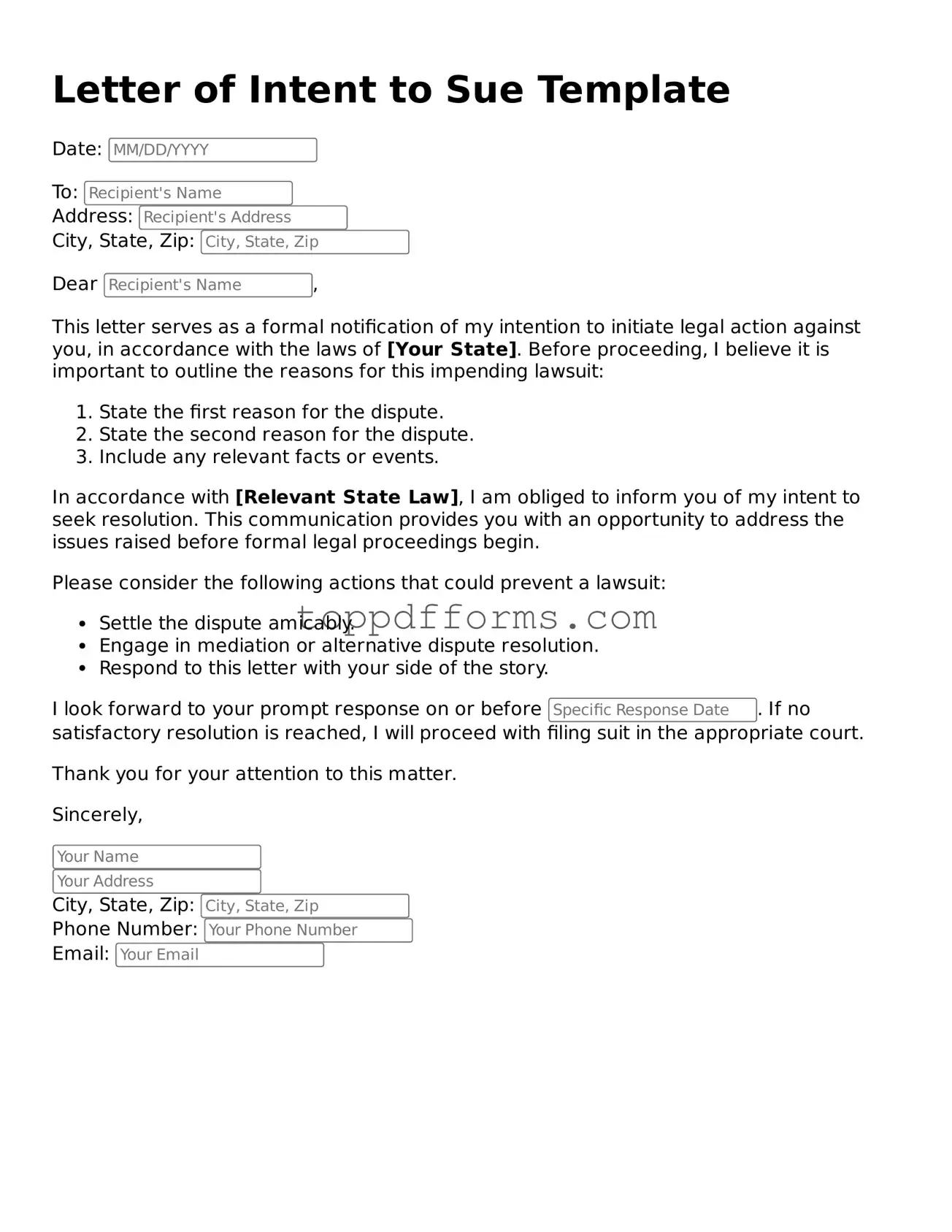What is a Letter of Intent to Sue?
A Letter of Intent to Sue is a formal document that notifies another party of your intention to file a lawsuit against them. It serves as a preliminary step before initiating legal action, allowing the recipient an opportunity to resolve the issue before it escalates to court. This letter typically outlines the grievances and the basis for the potential legal claim.
Why should I send a Letter of Intent to Sue?
Sending a Letter of Intent to Sue can be beneficial for several reasons. It demonstrates that you are serious about your claim and provides the other party with a chance to address the issue without the need for litigation. This can save both time and resources, and in some cases, it may lead to a settlement that is satisfactory for both parties.
What should be included in the Letter of Intent to Sue?
The letter should clearly state the nature of the dispute, the specific actions or inactions that have led to your grievances, and any relevant facts or evidence supporting your claims. Additionally, it should specify the relief or resolution you are seeking, whether it be monetary compensation or another form of remedy. Lastly, include a deadline for the recipient to respond, which encourages prompt action.
Is a Letter of Intent to Sue legally binding?
Generally, a Letter of Intent to Sue is not considered legally binding. It is primarily a notification and an opportunity for negotiation. However, the contents of the letter can be referenced in court if the matter proceeds to litigation, particularly if the other party fails to respond or take appropriate action.
How should I deliver the Letter of Intent to Sue?
Delivery methods can vary, but it is recommended to send the letter via certified mail with a return receipt requested. This ensures that you have proof of delivery, which may be important if the situation escalates to a lawsuit. Alternatively, you may choose to deliver it in person, but make sure to document the delivery method and date.
What happens if I do not receive a response to my Letter of Intent to Sue?
If you do not receive a response within the specified timeframe, you may proceed with filing a lawsuit. It is advisable to keep a record of the letter and any correspondence related to it, as this documentation can be useful in court. Consulting with an attorney before taking further action is also recommended to ensure you are following the appropriate legal steps.
Can I use a template for my Letter of Intent to Sue?
While templates can provide a helpful starting point, it is important to customize the letter to reflect your specific situation and claims accurately. A generic template may not address the unique aspects of your case. Consider seeking legal advice to ensure that your letter is appropriately tailored and effective in communicating your intent.
Should I consult an attorney before sending a Letter of Intent to Sue?
Consulting with an attorney before sending a Letter of Intent to Sue is highly advisable. An attorney can provide guidance on the content of the letter, help you understand your legal rights, and assess the strength of your case. They can also assist in negotiating with the other party, which may lead to a more favorable outcome without the need for litigation.
